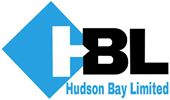The term “waterproof” or water-resistant describes objects unaffected by water or resisting water passage, or which are covered with a material that resists or does not allow water passage.
Waterproofing describes making an object waterproof or water-resistant, but in the construction industry that term is defined as the treatment of a surface or structure to prevent the passage of water under hydrostatic pressure. (National Roofing Contractors Association 1996)

There are many different ways and different materials that are used to waterproof parts of a building. The main concern discussed here is to understand the types of waterproofing systems used in below-grade situations, historically as well as recently. The two main water proofing systems are bituminous felts (historically) and polyurethane membrane (recently used).
What is bituminous felt: Bitumen (asphalt or coal-tar pitch is a mixed substance made up of organic liquids that are highly sticky, viscous, and waterproof. These systems are sometimes used to construct roofs, in the form of roofing felt or roll roofing products.
Bituminous waterproofing systems are designed to protect residential and commercial buildings. The figure below is an example of a bituminous felt (roofing felt) material. And the typical section of a bituminous felt.
What is a polyurethane membrane? PU is a liquid-applied waterproofing system. It’s a polymer composed of organic units joined by carbamate (urethane) links. Most Polyurethanes are thermosetting polymers that do not melt when heated. It provide high durable surface that withstands any condition such as variation in weather, UV exposure and Chemical attack.
When a PU membrane is applied, it forms a seamless membrane on the roof, balcony, terrace, wet-area and bridge deck as well as substructure seepage control; that protects the building structure reliably and on a long term basis, even under the most difficult conditions.
WHY POLYURETHANE MEMBRANE OVER BITUMINOUS FELTS?
Polyurethane membrane forms a seamless membrane on site, without joints or leak possibilities; the elastomeric membrane protects all point of seepage joint or cracks which might lead to leakages.
Bituminous felts in which prefabricated membranes are used on site, offering room for application mistakes.
PU membrane are usually applied using rollers, brushes or spraying machine technique which does not requires open flames or fire hazard which may result.
In the case of bituminous conventional felts where the use of fire on site is needed.
Full surface adhesion is provided by PU membrane, so no water can travel under the membrane, in case of a leak.
While BT Felts offers only low surface adhesion, so water can find its way under the membrane in case of a leak.
PU membrane provides water vapour permeability. No additional exhaust needs to be installed.
Bituminous felts are vapour barriers. Additional exhaust need to be installed every 5 – 10m2. Hence, increase in cost of installation.
PU membrane can be used as decorative materials to improve aesthetics of buildings. Applicable on accessible roof, terraces and pedestrian decks
In the case of bituminous felts which are laid plainly without been used as decorative design. It can be used only on non- Accessible roofs or concealed under tiling.
No health risk is involved during application of Polyurethane membrane.
Some (bitumen sheets) felt paper installed on existing buildings may contain asbestos, which has a carcinogenic risk if its dust is inhaled.
The fumes that are produced during hot application of asphalt or tar can cause dermal and respiratory problems.
Conclusively, Polyurethane membrane offers the best and higher tensile strength than other water proofing systems (e.g. BT felts losses strength rapidly due to ponding). It has a very durable surface that protects the surface from all weather conditions. It Provide the best protection on all kinds of roof/terraces, swimming pools and substructure waterproofing. PU membrane coating is cost effective which maintains high value for its money.

